-
 Bitcoin
Bitcoin $107,352.1067
0.28% -
 Ethereum
Ethereum $2,429.3531
-0.90% -
 Tether USDt
Tether USDt $1.0001
-0.02% -
 XRP
XRP $2.1894
4.62% -
 BNB
BNB $646.7968
0.36% -
 Solana
Solana $147.4290
4.03% -
 USDC
USDC $0.9998
-0.02% -
 TRON
TRON $0.2756
1.52% -
 Dogecoin
Dogecoin $0.1630
1.14% -
 Cardano
Cardano $0.5612
1.18% -
 Hyperliquid
Hyperliquid $37.0580
-0.05% -
 Bitcoin Cash
Bitcoin Cash $496.9410
-0.09% -
 Sui
Sui $2.7318
3.19% -
 Chainlink
Chainlink $13.1503
0.58% -
 UNUS SED LEO
UNUS SED LEO $9.0766
0.55% -
 Avalanche
Avalanche $17.7220
1.46% -
 Stellar
Stellar $0.2380
1.52% -
 Toncoin
Toncoin $2.8439
0.38% -
 Shiba Inu
Shiba Inu $0.0...01143
1.84% -
 Litecoin
Litecoin $85.8053
1.47% -
 Hedera
Hedera $0.1483
2.70% -
 Monero
Monero $314.3240
2.12% -
 Bitget Token
Bitget Token $4.6725
0.77% -
 Dai
Dai $1.0000
0.00% -
 Polkadot
Polkadot $3.3555
1.28% -
 Ethena USDe
Ethena USDe $1.0001
0.02% -
 Uniswap
Uniswap $7.0890
2.64% -
 Pi
Pi $0.5355
-3.40% -
 Pepe
Pepe $0.0...09393
1.06% -
 Aave
Aave $256.8136
-1.90%
Can Bitcoin withdrawal be canceled? How to withdraw?
Bitcoin withdrawals can't be canceled once confirmed on the blockchain; always double-check addresses before sending. To withdraw, log into your exchange, enter the recipient's address, and confirm the transaction.
May 12, 2025 at 11:15 pm
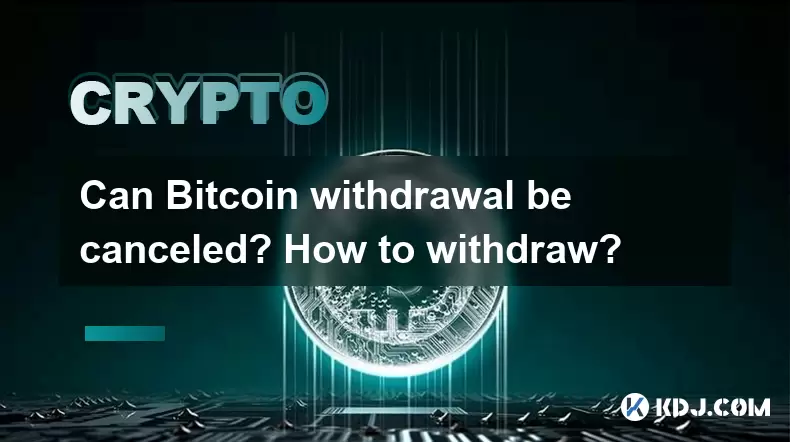
Can Bitcoin withdrawal be canceled? How to withdraw?
When dealing with cryptocurrencies such as Bitcoin, it's crucial to understand the mechanics of transactions, especially when it comes to withdrawals. This article will delve into the possibility of canceling a Bitcoin withdrawal and provide a detailed guide on how to withdraw Bitcoin from various platforms.
Understanding Bitcoin Withdrawals
Bitcoin transactions, once confirmed on the blockchain, are irreversible. This is one of the core principles of Bitcoin's design, ensuring that once a transaction is completed, it cannot be undone. The decentralized nature of Bitcoin means that no single entity can reverse a transaction. Therefore, if you've initiated a Bitcoin withdrawal and it has been confirmed on the blockchain, it is not possible to cancel it.
Steps to Withdraw Bitcoin
Withdrawing Bitcoin typically involves transferring it from an exchange or wallet to another wallet. Here’s a step-by-step guide on how to withdraw Bitcoin from an exchange:
- Log into your exchange account: Access your account on the cryptocurrency exchange where your Bitcoin is held.
- Navigate to the withdrawal section: Look for a tab or section labeled 'Withdraw' or 'Send'.
- Select Bitcoin: Choose Bitcoin (BTC) from the list of available cryptocurrencies.
- Enter the recipient's address: Input the Bitcoin address where you want to send the funds. Double-check the address to avoid sending Bitcoin to the wrong wallet.
- Specify the amount: Enter the amount of Bitcoin you wish to withdraw.
- Confirm the transaction: Review the details and confirm the withdrawal. Some exchanges may require additional verification steps, such as entering a two-factor authentication (2FA) code.
- Wait for confirmation: After initiating the withdrawal, you need to wait for the transaction to be confirmed on the blockchain. This can take anywhere from a few minutes to several hours, depending on network congestion and the transaction fee you've set.
What to Do If You Need to Cancel a Withdrawal
If you've realized you need to cancel a Bitcoin withdrawal shortly after initiating it, there are a few steps you can take, though success is not guaranteed:
- Contact the exchange support: If the transaction has not yet been broadcast to the Bitcoin network, the exchange might be able to cancel it. Reach out to customer support immediately.
- Check transaction status: Use a blockchain explorer to check the status of your transaction. If it has zero confirmations, there might still be a chance to cancel it.
- Understand the limitations: Once a transaction has been broadcast to the network and has at least one confirmation, it is highly unlikely that it can be canceled.
Preventing the Need for Cancellation
To minimize the risk of needing to cancel a withdrawal, follow these best practices:
- Verify the recipient's address: Always double-check the Bitcoin address before sending. Many exchanges offer an option to scan a QR code for added accuracy.
- Use small test transactions: Before sending a large amount, send a small test transaction to ensure the address is correct and the recipient can receive it.
- Understand transaction fees: Higher fees can lead to faster confirmations, reducing the window where you might need to cancel a transaction.
Withdrawing Bitcoin from a Hardware Wallet
Withdrawing Bitcoin from a hardware wallet to another wallet involves similar steps but with a focus on security:
- Connect your hardware wallet: Plug your hardware wallet into your computer or mobile device.
- Open the wallet software: Use the software provided by your hardware wallet manufacturer to access your Bitcoin.
- Select the 'Send' option: Navigate to the section where you can send Bitcoin.
- Enter the recipient's address: Input the Bitcoin address where you want to send the funds. Verify the address carefully.
- Specify the amount: Enter the amount of Bitcoin you wish to withdraw.
- Confirm on the hardware device: The transaction will need to be confirmed on the hardware wallet itself, adding an extra layer of security.
- Wait for confirmation: Monitor the transaction on a blockchain explorer until it is confirmed.
Frequently Asked Questions
Q: Can I reverse a Bitcoin transaction if I sent it to the wrong address?
A: No, once a Bitcoin transaction is confirmed on the blockchain, it cannot be reversed. It's essential to double-check the recipient's address before sending any Bitcoin.
Q: How long does it take for a Bitcoin withdrawal to be confirmed?
A: The confirmation time can vary from a few minutes to several hours, depending on the transaction fee and network congestion. Higher fees generally result in faster confirmations.
Q: Is it possible to speed up a Bitcoin withdrawal after it has been initiated?
A: If the transaction has not yet been confirmed, you can attempt to speed it up by using a feature called 'Replace-by-Fee' (RBF) on some wallets, which allows you to increase the transaction fee to encourage faster confirmation.
Q: What should I do if my Bitcoin withdrawal is stuck?
A: If your transaction appears to be stuck, you can try increasing the transaction fee using RBF if your wallet supports it. If that's not possible, you may need to wait for the transaction to eventually be confirmed or contact the support of the platform from which you initiated the withdrawal.
Disclaimer:info@kdj.com
The information provided is not trading advice. kdj.com does not assume any responsibility for any investments made based on the information provided in this article. Cryptocurrencies are highly volatile and it is highly recommended that you invest with caution after thorough research!
If you believe that the content used on this website infringes your copyright, please contact us immediately (info@kdj.com) and we will delete it promptly.
- Across Crypto Project Faces Heat: Secret $23M Transfer Sparks Governance Debate
- 2025-06-28 16:30:13
- Trump Coin's Wild Ride: Liquidity Drain, Exchange Deposits, and What It Means for Binance & OKX
- 2025-06-28 16:50:13
- Solana, XRP, and Spot ETFs: A New York Minute on Crypto's Shifting Sands
- 2025-06-28 17:10:13
- Trump, Memecoin Mania, and Whale Watching: A New York Minute in Crypto
- 2025-06-28 16:30:13
- Gemini, Tokenized Stocks, and Europe: A New Era for Investment?
- 2025-06-28 17:10:13
- Shiba Inu, Lending Coins, and Early Holders: A New Frontier
- 2025-06-28 16:51:59
Related knowledge
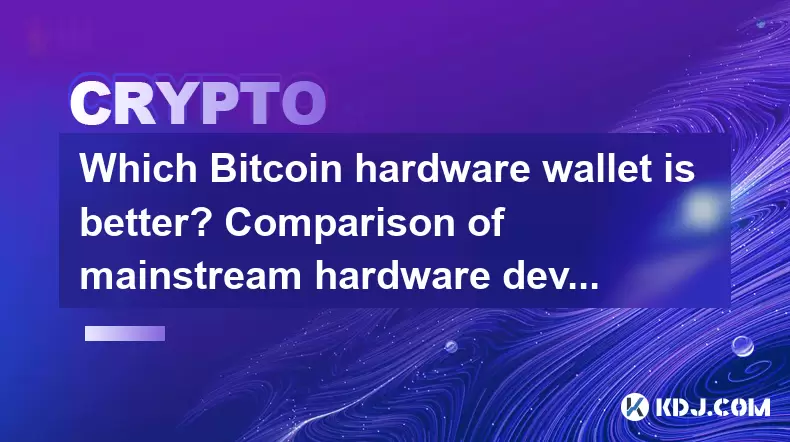
Which Bitcoin hardware wallet is better? Comparison of mainstream hardware devices
Jun 16,2025 at 02:08am
What Is a Bitcoin Hardware Wallet?A Bitcoin hardware wallet is a physical device designed to securely store the private keys associated with your cryptocurrency holdings. Unlike software wallets, which are more vulnerable to online threats, hardware wallets keep private keys offline, significantly reducing the risk of unauthorized access. These devices ...

What are Bitcoin non-custodial wallets? Self-controlled private key recommendation
Jun 16,2025 at 11:29pm
Understanding Bitcoin Non-Custodial WalletsA Bitcoin non-custodial wallet is a type of digital wallet where users retain full control over their private keys. Unlike custodial wallets, which are managed by third-party services such as exchanges, non-custodial wallets ensure that only the user can access and manage their funds. This means no intermediary...
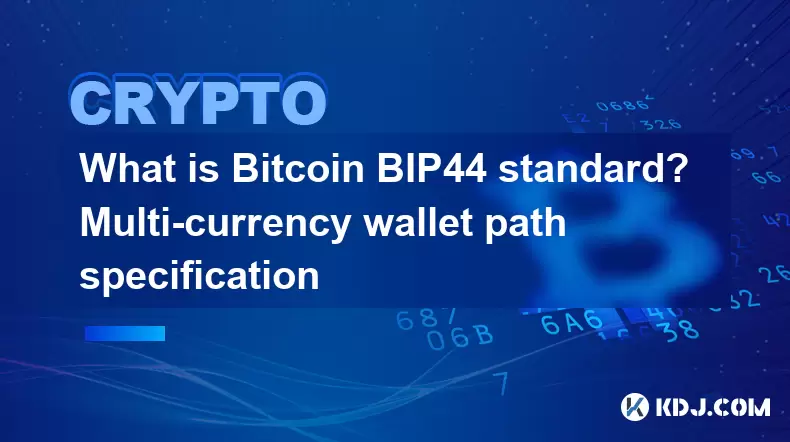
What is Bitcoin BIP44 standard? Multi-currency wallet path specification
Jun 15,2025 at 04:08pm
Understanding the BIP44 Standard in Bitcoin and CryptocurrencyThe BIP44 standard, which stands for Bitcoin Improvement Proposal 44, is a widely adopted hierarchical deterministic wallet structure used across various cryptocurrencies. It defines a structured path format that enables wallets to support multiple currencies while maintaining consistency and...

What is Bitcoin HD wallet? Advantages of layered deterministic wallets
Jun 16,2025 at 03:56pm
Understanding Bitcoin HD WalletsA Bitcoin HD wallet, or Hierarchical Deterministic wallet, is a type of cryptocurrency wallet that generates multiple keys and addresses from a single seed phrase. Unlike traditional wallets that create random private keys for each transaction, an HD wallet follows a structured hierarchy to derive keys in a deterministic ...
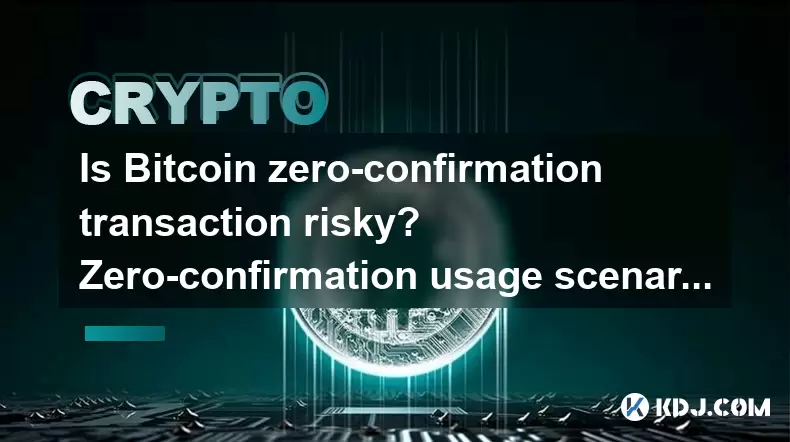
Is Bitcoin zero-confirmation transaction risky? Zero-confirmation usage scenarios
Jun 15,2025 at 03:57am
Understanding Zero-Confirmation Transactions in BitcoinBitcoin zero-confirmation transactions, often referred to as 'unconfirmed transactions,' are those that have been broadcast to the network but have not yet been included in a block. This means they have not received any confirmations from miners. While these transactions can be useful in certain con...
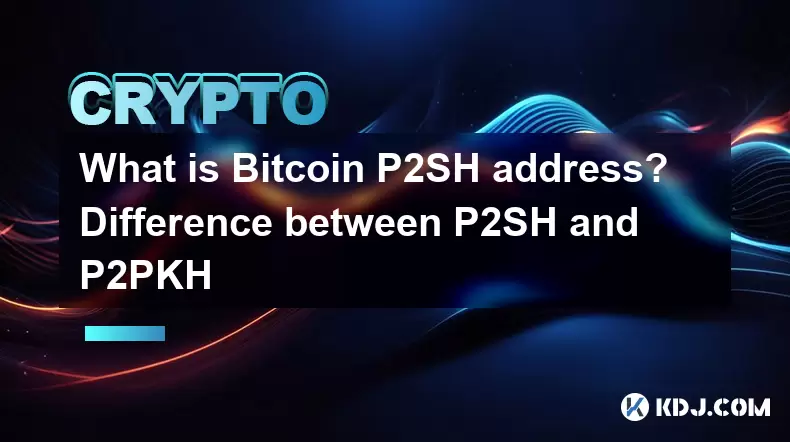
What is Bitcoin P2SH address? Difference between P2SH and P2PKH
Jun 16,2025 at 09:49pm
Understanding Bitcoin P2SH AddressesA Pay-to-Script-Hash (P2SH) address in the Bitcoin network is a type of address that allows users to send funds to a script hash rather than directly to a public key hash, as seen in earlier address formats. This innovation was introduced through BIP 16, enhancing flexibility and enabling more complex transaction type...

Which Bitcoin hardware wallet is better? Comparison of mainstream hardware devices
Jun 16,2025 at 02:08am
What Is a Bitcoin Hardware Wallet?A Bitcoin hardware wallet is a physical device designed to securely store the private keys associated with your cryptocurrency holdings. Unlike software wallets, which are more vulnerable to online threats, hardware wallets keep private keys offline, significantly reducing the risk of unauthorized access. These devices ...

What are Bitcoin non-custodial wallets? Self-controlled private key recommendation
Jun 16,2025 at 11:29pm
Understanding Bitcoin Non-Custodial WalletsA Bitcoin non-custodial wallet is a type of digital wallet where users retain full control over their private keys. Unlike custodial wallets, which are managed by third-party services such as exchanges, non-custodial wallets ensure that only the user can access and manage their funds. This means no intermediary...

What is Bitcoin BIP44 standard? Multi-currency wallet path specification
Jun 15,2025 at 04:08pm
Understanding the BIP44 Standard in Bitcoin and CryptocurrencyThe BIP44 standard, which stands for Bitcoin Improvement Proposal 44, is a widely adopted hierarchical deterministic wallet structure used across various cryptocurrencies. It defines a structured path format that enables wallets to support multiple currencies while maintaining consistency and...

What is Bitcoin HD wallet? Advantages of layered deterministic wallets
Jun 16,2025 at 03:56pm
Understanding Bitcoin HD WalletsA Bitcoin HD wallet, or Hierarchical Deterministic wallet, is a type of cryptocurrency wallet that generates multiple keys and addresses from a single seed phrase. Unlike traditional wallets that create random private keys for each transaction, an HD wallet follows a structured hierarchy to derive keys in a deterministic ...

Is Bitcoin zero-confirmation transaction risky? Zero-confirmation usage scenarios
Jun 15,2025 at 03:57am
Understanding Zero-Confirmation Transactions in BitcoinBitcoin zero-confirmation transactions, often referred to as 'unconfirmed transactions,' are those that have been broadcast to the network but have not yet been included in a block. This means they have not received any confirmations from miners. While these transactions can be useful in certain con...

What is Bitcoin P2SH address? Difference between P2SH and P2PKH
Jun 16,2025 at 09:49pm
Understanding Bitcoin P2SH AddressesA Pay-to-Script-Hash (P2SH) address in the Bitcoin network is a type of address that allows users to send funds to a script hash rather than directly to a public key hash, as seen in earlier address formats. This innovation was introduced through BIP 16, enhancing flexibility and enabling more complex transaction type...
See all articles
























































































